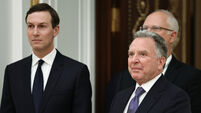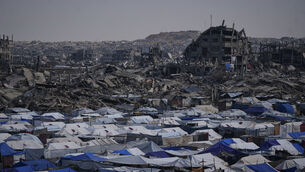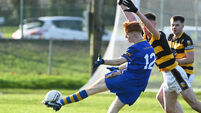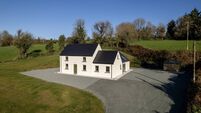Casting off shackles of hatred with forgiveness

Imprisoned for nearly three decades for his fight against white minority rule, Mandela was determined to use his prestige and charisma to end apartheid while avoiding a civil war.
“The time for the healing of the wounds has come. The moment to bridge the chasms that divide us has come,” Mandela said in his acceptance speech on becoming South Africa’s first black president in 1994.
“We have, at last, achieved our political emancipation.”
In 1993, Mandela was awarded the Nobel Peace Prize, an honour he shared with FW de Klerk, the white Afrikaner leader who freed him from prison three years earlier and negotiated apartheid’s end.
Mandela went on to play a prominent role on the world stage as an advocate of human dignity in the face of challenges ranging from political repression to Aids.
He formally left public life in June 2004 before his 86th birthday, telling his adoring countrymen: “Don’t call me. I’ll call you.” But he remained one of the world’s most revered public figures, combining celebrity sparkle with an unwavering message of freedom, respect, and human rights.
Whether defending himself at his own treason trial in 1963 or addressing world leaders as a graying elder statesman, he radiated an image of moral rectitude expressed in measured tones, often leavened by a mischievous humour.
“He is at the epicentre of our time, ours in South Africa, and yours, wherever you are,” Nadine Gordimer, the South African writer and Nobel Laureate for Literature, once remarked.
His years behind bars made him the world’s most celebrated political prisoner and a leader of mythic stature for millions of black South Africans and oppressed people far beyond his country’s borders.
Charged with capital offences in the 1963 Rivonia Trial, his statement from the dock was his political testimony.
“During my lifetime, I have dedicated myself to this struggle of the African people,” he said. “I have fought against white domination, and I have fought against black domination.
“I have cherished the ideal of a democratic and free society in which all persons live together in harmony and with equal opportunities.
“It is an ideal I hope to live for and to achieve. But if needs be, it is an ideal for which I am prepared to die.”
Branded a terrorist by his enemies, he was sentenced to life imprisonment in 1964, isolated from his countrymen as they suffered oppression, violence, and forced resettlement under apartheid.
He was incarcerated on Robben Island, a penal colony off Cape Town, where he would spend the next 18 years before moving to mainland prisons.
When he was released on Feb 11, 1990, walking away from the Victor Verster prison hand-in-hand with his wife Winnie, the event was watched live by television viewers across the world.
“As I finally walked through those gates... I felt, even at the age of 71, that my life was beginning anew. My 10,000 days of imprisonment were at last over,” Mandela said.
In the next four years, thousands of people died in political violence. Most were blacks killed in fighting between ANC supporters and Zulus loyal to Mangosuthu Buthelezi’s Inkatha Freedom Party, although right-wing whites also staged violent actions to upset the moves towards democracy.
Mandela prevented a racial explosion after the murder of popular Communist Party leader Chris Hani by a white assassin in 1993, appealing for calm in a national television address. That same year, he and de Klerk were jointly awarded the Nobel Peace Prize.
Talks between the ANC and the government began in 1991, leading to South Africa’s first all-race elections on April 27, 1994.
The election result was never in doubt and his inauguration in Pretoria on May 10, 1994, was a celebration of a peoples’ freedom.
Mandela made reconciliation the theme of his presidency. He took tea with his former jailers and won over many whites when he donned the jersey of South Africa’s rugby team — once a symbol of white supremacy — at the final of the World Cup in 1995 at Johannesburg’s Ellis Park stadium.
The hallmark of Mandela’s mission was the Truth and Reconciliation Commission, which investigated apartheid crimes on both sides and tried to heal the wounds. It also provided a model for other countries torn by civil strife.
In 1999, Mandela, often criticised for a woolly grasp of economics, handed over to younger leaders — a voluntary exit from power cited as an example to long-ruling African leaders.
Most South Africans are proud of their post-apartheid multi-racial ‘Rainbow Nation’.
However, Mandela’s legacy of tolerance and reconciliation has been threatened in recent years by squabbling between factions in the ANC and social tensions in a country that, despite its political liberation, still suffers great inequalities.
Mandela’s last major appearance on the global stage came in 2010 when he donned a fur cap in the South African winter and rode on a golf cart, waving to an exuberant crowd of 90,000 at the soccer World Cup final, one of the biggest events in the country’s post-apartheid history.
“I leave it to the public to decide how they should remember me,” he said on South African television before his retirement.
“But I should like to be remembered as an ordinary South African who, together with others, has made his humble contribution.”













